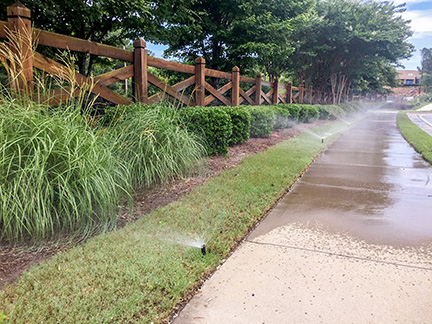Native Grasses for Lawns and Gardens
Native Grasses for Lawns and Gardens
Kimberly Toscano
Native grasses once danced in the breeze across large swathes of the landscape from hillside meadows to rolling prairies. Today, gardeners are embracing native grasses as an important part of sustainable gardening practices. These hard-working plants are incredibly diverse, bringing low-maintenance beauty to lawns and gardens.
Native Ornamental Grasses
Ornamental grasses provide structure and movement to planting beds. Varieties range from the dramatic to the serene, but all grasses bring stunning texture to the garden. There are many ornamental grasses available in the garden center, though not all are native. The following native species are among the most adaptable across the country.
Prairie Dropseed (Sporobolus heterolepis). This low-growing grass produces mounding tufts of ultra-fine, bright green foliage. Airy seed heads rise above the foliage in summer and autumn turns the leaf blades a warm, golden-orange hue. This plant makes a beautiful carpet when massed beneath flowering perennials like coneflower or salvia.
Little Bluestem (Schizachyrium scoparium). Gorgeous in any season, little bluestem just might be the toughest grass available. Vertical blue-gray foliage turns vibrant bronze-red in fall and holds that color throughout winter. Feathery seed heads glisten silver-white in the autumn sun. No need to pamper this plant, avoid excessive water or fertilizer.
Inland (Northern) Sea Oats (Chasmanthium latifolium). A native grass for shady sites, inland sea oats is adored for the unique seed heads that appear early summer and dangle on arched stems well into autumn. Plants will sprout from fallen seed, so clip seed heads in fall – they make lovely additions to flower arrangements.
Blue Grama (Bouteloua gracilis). Waving like tiny flags atop tufts of blue-green foliage, the eyelash-shaped seed heads of blue grama are unlike anything in the garden. Flowers emerge chartreuse-green in mid-summer and mature to blonde seed heads that linger through fall. Flower heads rest horizontally in striking contrast to the upright foliage. Plants tolerate cold, heat, and drought.
Native Lawn Grasses
While homeowners have been quick to adopt native plants in flower gardens, converting lawns to native turf has been a much slower process. Throughout most of the country, the majority of grasses used for lawns are exotic species bred to produce the carpet-like appearance we expect. Recent advances in plant breeding and creative seed mixtures are bringing more native grasses to lawns.
Buffalograss (Bouteloua dactyloides). This warm-season grass creates a soft, blue-green lawn that stands up to light foot traffic. Native to the central part of the country, buffalograss is widely adaptable, tolerates high heat, and thrives under low-water conditions once established. Buffalograss is the most widely available native turf grass, sold by itself or as a mixture with Blue grama (Bouteloua gracilis).
St. Augustine Grass (Stenotaphrum secundatum). Native to the southeastern United States and parts of California, St. Augustine grass produces thick, deep green foliage. This warm season grass tolerates a range of soil types and survives mild drought. Plants perform well in heavy shade and stand up to foot traffic.
Red Fescue (Festuca rubra). With fine foliage and an emerald green color, red fescue makes an ideal cool-season lawn in more temperate, northern landscapes. Often sold blended with other fescues, this sod-forming grass tolerates foot traffic and moderate drought once established. Red fescue grows in shady areas beneath tree canopies.
Seashore bentgrass (Agrostis pallens): On the west coast, the fine foliage of seashore bentgrass is gaining traction as a water-wise turf species. Once established, seashore bentgrass withstands extreme drought, heavy foot traffic and low mowing heights.
Lawns thrive in sun and partial shade.
Mowing Native Lawns
To promote a dense, healthy lawn adjust your mowing practices according to the species of grass growing. St. Augustine grass produces a denser lawn when mowed at a lower height of 2 ½ to 3 inches. For red fescue, a higher mowing height of three to four inches is recommended.
Buffalograss and seashore bentgrass can be mowed at different heights depending on personal preference and desired use of turf areas. For a high-quality lawn in areas that will receive traffic, mow once per week at a height of 2 to 3 inches. In low-maintenance areas lawns can be left unmown or turf areas can be mowed every three to four weeks to a height of 3 to 4 inches. Areas left unmown should be cut once per year in spring to remove old growth.

